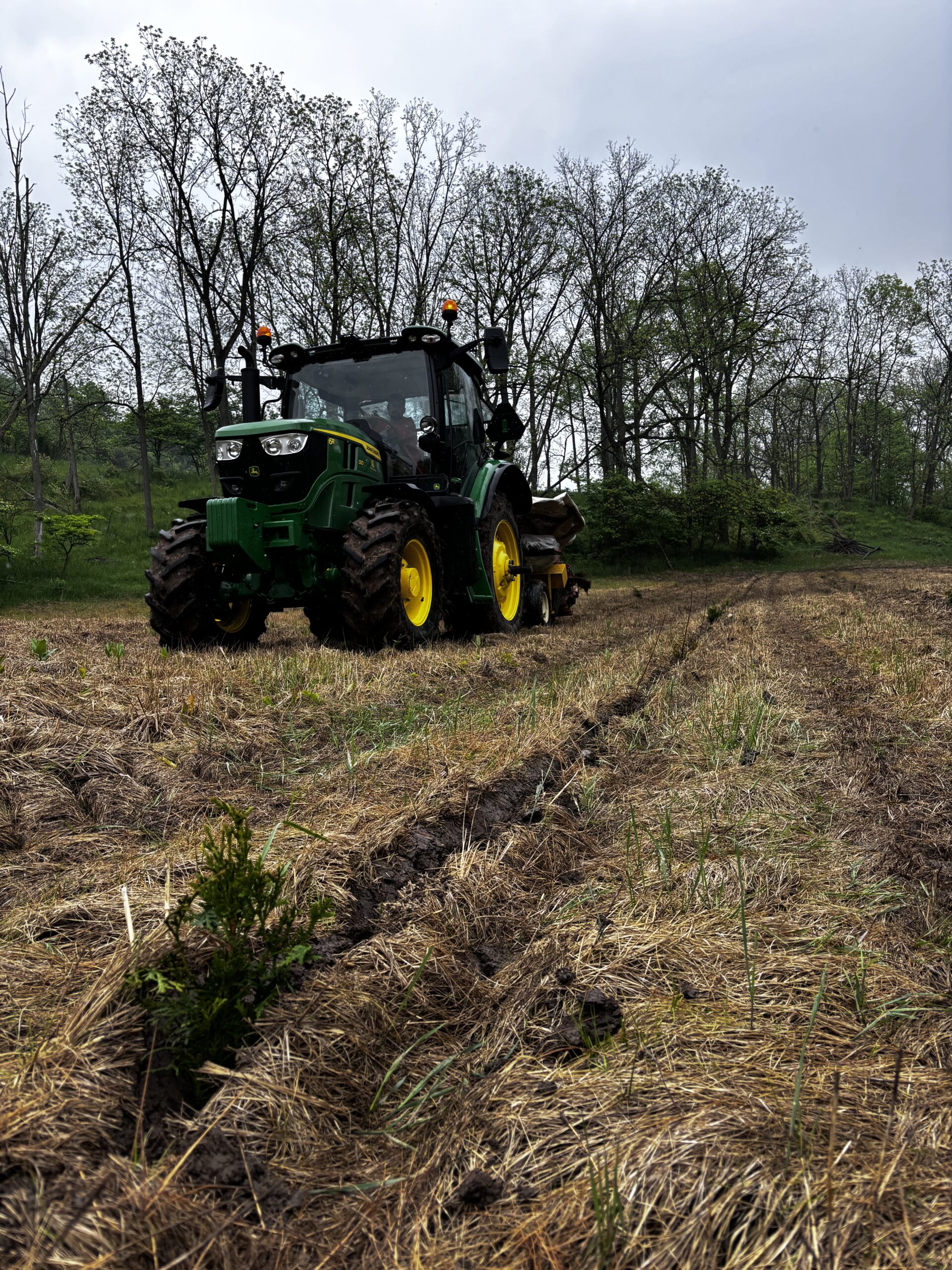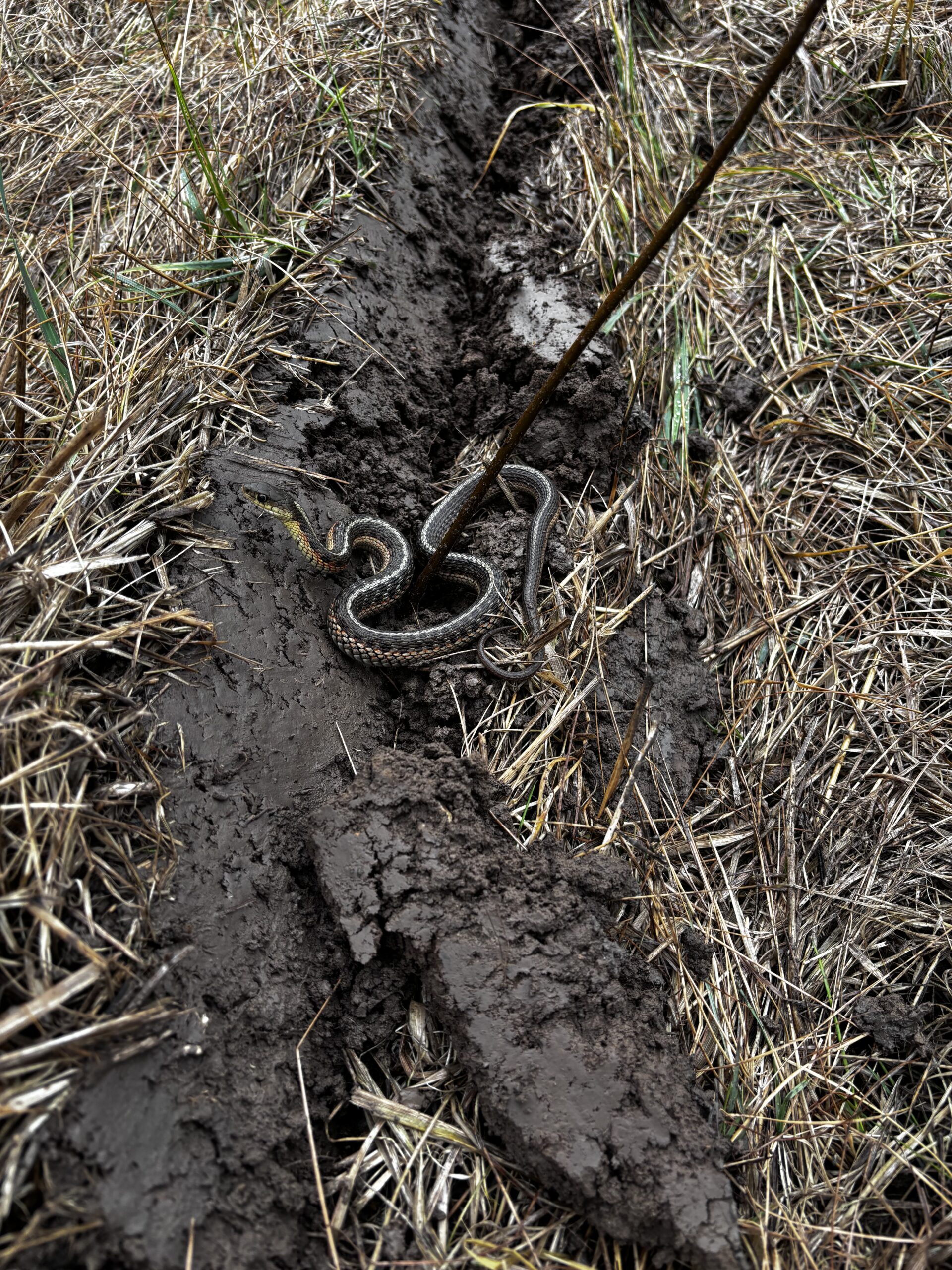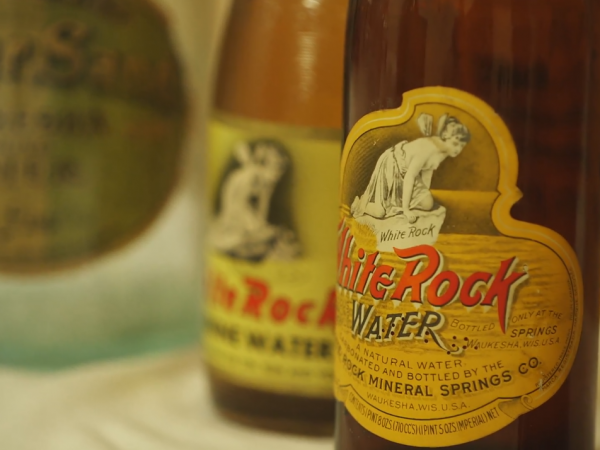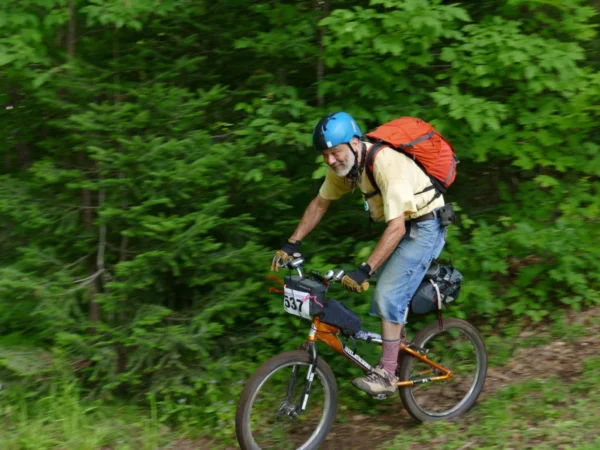
The rain started more than an hour before we arrived at an acre of marginal farmland that’s wedged between a house on a nearby hill and Sharon Creek. A tributary of the Thames River, Sharon Creek is a waterway that wends 170 miles through southwestern Ontario before emptying into Lake. St. Clair.
Maple and basswood trees lined a narrow rural road, shoehorned between the creek and the sleeping farmland. The field, an underutilized section of farmland, was last sown with wheat. It’s prone to flooding and near impossible to farm with modern machinery, as it’s too small to be worthwhile and too awkward given its shark-fin shape.
So, what better to do with the land than help it run wild?
Early one May morning, a convoy of white trucks descended on the property some 14 miles southwest of London, Ontario. Plastered on the lead truck was the logo for the Lower Thames Valley Conservation Authority (LTVCA), one of many organizations overseeing a restoration program that helped get more than 100,000 native trees planted across their vast watershed — that spans London to Lake St. Clair and the shores of Lake Erie — this year alone.
Chugging down the road behind them came a small John Deere tractor. It descended a small slope and stopped, tentatively, on firm ground near the roadside. Michael Young, a watershed technician with LTVCA and the staff member best able to hoe the straightest row, hopped down from the cab. He walked the length of the field, jabbing the toe of his boot into the mud, trying to gauge whether the soggy soil could withstand the weight of the tractor on its six-foot tires.
Young was soon joined by Amanda Blain, LTVCA’s land stewardship technician. Blain acted as the operation’s nerve centre; helping to direct staff and ensure the sacks full of native tree saplings, stacked in the bed of her truck, made it into the ground by day’s end.
“What do you think?” Blain asked Young.
“It’s been dry lately, but it’s been raining pretty steadily all morning,” Young replied.
He was holding a mud-caked battery pack from a cordless tool, the kind of treasure he likes to remove by hand early, rather than prying it later from the tractor’s blade.
“The mud’s not sticking to the tires too bad,” Young said. “And I saw farmers out planting this morning on the drive in. That’s usually a good sign.”
“Yeah, I’ve planted in worse,” Blain said. She pulled the hood of her black rain jacket over her head. “Okay. Let’s do it.”

Two LTVCA staff sit in the trailer beneath a tarp to hold off the rain. Pulled behind the tractor, these conservation authority staffers alternate placing saplings in the thin trench dug by the John Deere. (Photo Credit: Andrew Reeves)
Conservation authorities in Ontario, like the LTVCA, are children of the provincial government. Thirty-six of them function throughout southern and eastern Ontario, though several operate in Thunder Bay and Sault Ste. Marie on Lake Superior. Almost 80 percent of conservation authority funding comes from municipal governments or is self-generated. The LTVCA, for example, raised funds selling tree saplings to private landowners. They sold 65,000 native trees this way in spring 2024 alone. While the primary role of conservation authorities has been to protect people and property from flood risks and erosion, many have interpreted their mandate broadly, incorporating actions like tree planting in flood prone areas.
Native tree planting has been a big part of what the LTVCA does to address conservation concerns within its jurisdiction. Since 2006, they have partnered with governments, non-profits, corporations, and private funders to build up the region’s meagre tree canopy. This has the added benefit of also improving biodiversity in a part of Ontario that’s been heavily modified by European agricultural practices for centuries.
Private landowners have played a critical role. Rather than planting trees exclusively on conservation authority property, Blain and the LTVCA have cultivated relationships with dozens of landowners throughout the region. More join each year. Together, they identify land that would not be missed if taken out of agricultural production and covered with native trees. The end result is hundreds of small parcels of fringe farmland dotted with trees that, in time, will enhance local biodiversity, secure soils, and sequester carbon emissions.
While farmers are compensated for the land they ultimately lose to production, many older landowners approach the LTVCA because they’re looking to leave a lasting natural impression on the land.

Michael Young driving the John Deere tractor, hoeing the straightest row possible for trees like this white cedar to grow in oddly shaped fields. (Photo Credit: Andrew Reeves)
“I find sometimes people want to leave a legacy for their kids or their grandkids, and they want something left that’s beneficial for future generations,” Blain told Great Lakes Now. Others are looking to rewild small portions of their land to provide more habitat for deer, wild turkeys or other game they’re looking to hunt.
In addition to Forests Ontario and Tree Canada, Blain works closely to oversee planting efforts with Alternative Land Use Services (ALUS), a national organization that works with farmers across Canada to transform marginal farmland into hotspots of local biodiversity. Graham Moddle, projector coordinator for ALUS Middlesex, told Great Lakes Now that landowners are paid $150 per acre they give over to tree planting.
“That’s just to offset the cost of maintenance and land stewardship,” he said. “It also recognizes the value of the services that these projects provide.”
ALUS isn’t looking to compete with prime farmland because farmers need to continue feeding cities, Moddle added. He looked around the work site and noted issues with flooding and erosion that had stripped the earth here of its good topsoil, leaving only harder subsoils left.
“This land is not producing like it should for prime cropland,” said Moddle. “We look at using the land in a different way and producing something else.”
The net ecological benefits of so many small parcels of farmland being sown with tens of thousands of trees each year really add up, Greg Van Every, LTVCA conservation services coordinator, told Great Lakes Now. He gestured to the property his crew was working on and noted it was an ideal scenario. The trees they were planting that day would immediately be part of a well-connected ecosystem linked to other habitats in the surrounding area.
But that’s not always the case with properties they work on, Van Every added: “In some places it’s really fragmented. And if it’s fragmented, well — we have to build those linkages, those little spaces to connect to each other.”
Sometimes it strikes Van Every that his crew are creating an island of native trees in a sea of agriculture. Yet, even then, he stressed how those patches of biodiversity are necessary to give nature something to build on.
“Over time these plots of land will connect and restore a lot of the networks of wildlife corridors that we originally had before European settlement,” said Van Every.

Greg Van Every and LTVCA staff ensure saplings are properly inserted into the ground, compacting the soil around each tree. (Photo Credit: Andrew Reeves)
Once Blain had given the greenlight to begin the day’s planting, a growing team of LTVCA staff and others from ALUS Middlesex set to work. The rain had lightened to a steady drizzle. While the rain made for a soggy morning of planting, the fact that the ground was still solid enough to use the tractor meant that Blain and the crew could avoid planting hundreds of trees by hand.
That’s a hard slog, but the opposite is worse. Weeks of drought in spring make it near impossible to plant in hard soils; they simply crumble to dust when sliced open by the tractor. Hot temperatures, meanwhile, place a lot of stress on immature trees.
Young and Blain prepped the field and readied the tractor, heaving the planting trailer into place and securing it to the John Deere. Elsewhere on site, Van Every, Moddle, and the rest of the crew unwrapped bushels of saplings wrapped in plastic and heavy-duty packing paper and laid them on a solar blanket on the ground.
While many of these saplings began as seeds collected by LTVCA staff the previous season, the baby trees were cultivated at a nursery 165 miles away and shipped back to the appropriate forestry zone to make sure they are planted near to where they were formed.
Getting creative in what trees are placed where is Blain’s favourite part of the job. The soil dictates where certain trees are planted, she said. Tamarack and sycamore are typically planted in swampy parts of a property, whereas pines are planted atop hills as they do better in drier soils.

A snake is disturbed in its habitat. Like all animals found in planting fields, LTVCA staff members try to scare them out of the path of the tractor’s blade. (Photo Credit: Andrew Reeves)
“Most landowners don’t know what tree goes in what soil, so they leave that up to me, which is really the fun part,” Blain said. “I like to plant what I think looks nice but also what’s going to do well.”
On this day, Blain opted for a windbreak of cedar and nannyberry, a shrub whose berries are favourites of deer and birds — some humans, too.
“It’s aesthetically pleasing, but this combo also adds a lot of benefits to the ecosystem,” said Blain.
Young fired up the tractor. Behind him in the trailer sat two staff members beneath a sagging green tarp laid atop the trailer in a noble but fruitless attempt to shield them from the rain. In front of each staffer sat a stuffed sack, filled with saplings — nannyberry and white cedar, but also tamarack, silver maple, red osier dogwood, and black oak. Between them sat a lever that lowers a heavy blade. It’s capable of slicing a gash in the soil wide enough for each staffer to pull a sapling from their lap and then dropping a tree into the dirt every eight feet. Small tires at the back of the trailer angled inwards pinch the freshly cut seam shut.
And on it goes. Trailing behind the tractor is the rest of the crew. Armed with shovels and bulky boots they secure the saplings in place and compact the dirt around them. Pausing only to reload the tractor with new trees, scare snakes out of the tractor’s path or to ferry confused toads out of harm’s way, the team continues their work all morning. Tiring work, to be sure, but no one here looks like they would trade it for more time in the office.
By afternoon roughly 1,000 new trees will be on their way in life. Blain will come back late in the summer to check on them, and then again after one year, and again in five years to see how they’re doing. Anywhere from 60 to 90 percent of the trees planted every year typically survive. Landowners will often mow the spaces between the rows of saplings to cut down on competition with other plants: eventually most plant clover or another ground cover and leave the trees be.
After that, they’re on their own.
Catch more news at Great Lakes Now:
Ontario faces uneven investment in water infrastructure
Featured image: Amanda Blain goes over plans for the day’s planting with LTVCA staff. (Photo Credit: Andrew Reeves)




